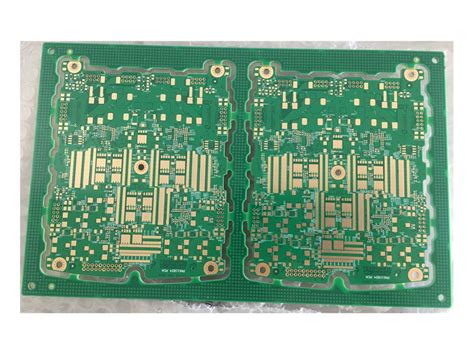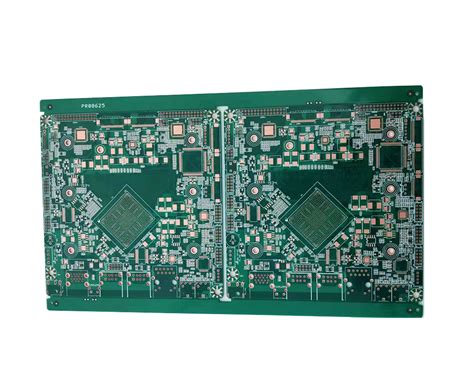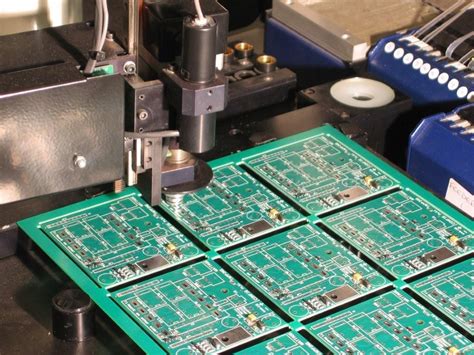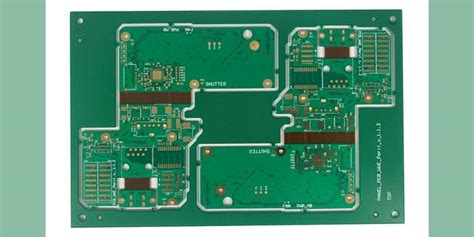Metal core pcb board
Advantages Of Metal Core PCB Boards In High-Power Applications
Metal core printed circuit boards (PCBs) have emerged as a pivotal innovation in the realm of high-power applications, offering a range of advantages that make them indispensable in various industries. These boards are distinguished by their unique construction, which incorporates a metal core, typically aluminum or copper, as opposed to the traditional fiberglass or epoxy substrates. This fundamental difference in design endows metal core PCBs with several benefits, particularly in applications where heat dissipation and mechanical stability are of paramount importance.
One of the most significant advantages of metal core PCBs is their superior thermal management capabilities.
In high-power applications, electronic components often generate substantial amounts of heat, which, if not effectively managed, can lead to performance degradation or even failure. The metal core in these PCBs acts as an excellent heat conductor, efficiently dissipating heat away from critical components. This enhanced thermal conductivity ensures that the components operate within their optimal temperature range, thereby improving reliability and extending the lifespan of the device. Consequently, metal core PCBs are particularly well-suited for applications such as LED lighting, power converters, and automotive electronics, where heat management is crucial.
In addition to their thermal advantages, metal core PCBs also offer enhanced mechanical stability.
The metal core provides a robust foundation that reduces the risk of warping or bending, which can be a concern with traditional PCBs, especially in environments subject to mechanical stress or vibration. This increased rigidity not only protects the integrity of the circuit but also ensures consistent performance over time. As a result, metal core PCBs are often employed in industrial and automotive applications, where durability and reliability are essential.
Moreover, the use of metal core PCBs can lead to a reduction in the overall size and weight of electronic devices.
By efficiently managing heat, these boards allow for the integration of more components in a compact space without the need for additional cooling mechanisms, such as heat sinks or fans. This compactness is particularly advantageous in applications where space is at a premium, such as in aerospace and portable electronics. Furthermore, the reduced need for supplementary cooling components can lead to cost savings in both materials and assembly, making metal core PCBs a cost-effective solution for high-power applications.
Another noteworthy benefit of metal core PCBs is their ability to support high-density circuit designs.
The efficient heat dissipation properties allow for closer placement of components, facilitating more complex and powerful circuit configurations. This capability is especially beneficial in advanced electronic systems that require high performance and functionality within a limited footprint.
In conclusion, metal core PCBs offer a multitude of advantages that make them highly suitable for high-power applications. Their superior thermal management, mechanical stability, potential for size and weight reduction, and support for high-density designs collectively contribute to their growing popularity across various industries. As technology continues to advance and the demand for more efficient and reliable electronic systems increases, the role of metal core PCBs is likely to become even more prominent, driving innovation and enhancing performance in high-power applications.

Thermal Management Solutions Using Metal Core PCB Boards
Metal core printed circuit boards (MCPCBs) have emerged as a pivotal solution in the realm of thermal management, addressing the growing demand for efficient heat dissipation in electronic devices. As electronic components become increasingly powerful and compact, the challenge of managing heat effectively has intensified. This is where MCPCBs come into play, offering a robust solution to thermal management issues that traditional PCBs struggle to address.
At the heart of MCPCBs is their unique construction, which typically involves a metal core, often aluminum or copper, sandwiched between layers of dielectric material and copper circuitry.
This metal core serves as a heat spreader, efficiently conducting heat away from critical components and dissipating it across a larger surface area. Consequently, this design significantly enhances the thermal performance of the board, making it an ideal choice for applications where heat dissipation is paramount.
One of the primary advantages of using metal core PCBs is their ability to maintain lower operating temperatures for electronic components.
By effectively managing heat, MCPCBs help in prolonging the lifespan of components, reducing the risk of thermal-related failures, and ensuring consistent performance. This is particularly crucial in high-power applications such as LED lighting, power supplies, and automotive electronics, where excessive heat can lead to performance degradation or even catastrophic failure.
Moreover, the integration of a metal core within the PCB structure allows for a more compact design.
Traditional methods of heat management, such as heat sinks and fans, often require additional space and can add to the overall weight and complexity of the device. In contrast, MCPCBs provide an all-in-one solution that not only manages heat but also contributes to a more streamlined and lightweight design. This is especially beneficial in applications where space and weight are critical considerations, such as in aerospace and portable electronics.
In addition to their thermal management capabilities, metal core PCBs also offer improved mechanical stability.
The metal core provides a sturdy foundation that enhances the board’s structural integrity, making it more resistant to mechanical stress and vibration. This attribute is particularly advantageous in environments where electronic devices are subjected to harsh conditions, ensuring reliability and durability over time.
Furthermore, the use of metal core PCBs can lead to cost savings in the long run.
By reducing the need for additional thermal management components and minimizing the risk of component failure, MCPCBs can lower maintenance costs and extend the overall lifespan of electronic devices. This makes them an economically viable option for manufacturers looking to optimize performance while managing costs effectively.
In conclusion, metal core PCB boards represent a significant advancement in thermal management solutions, offering a combination of efficient heat dissipation, compact design, mechanical stability, and cost-effectiveness. As the demand for high-performance electronic devices continues to grow, the role of MCPCBs in ensuring reliable and efficient operation becomes increasingly critical. By addressing the challenges of heat management head-on, metal core PCBs pave the way for the development of more powerful, compact, and durable electronic devices, meeting the needs of a rapidly evolving technological landscape.

Design Considerations For Metal Core PCB Boards In LED Lighting
When designing metal core printed circuit boards (MCPCBs) for LED lighting applications, several critical considerations must be taken into account to ensure optimal performance and reliability. MCPCBs are particularly favored in LED lighting due to their superior thermal management capabilities, which are essential for maintaining the longevity and efficiency of LEDs. As LEDs generate significant heat during operation, the ability of a PCB to dissipate this heat effectively is paramount. Therefore, the choice of materials, layer configuration, and thermal management strategies are crucial elements in the design process.
To begin with, the selection of the core material is a fundamental aspect of MCPCB design.
Typically, aluminum or copper is used as the metal core due to their excellent thermal conductivity. Aluminum is often preferred for its balance of cost-effectiveness and thermal performance, while copper, although more expensive, offers superior thermal conductivity. The choice between these materials depends on the specific thermal requirements and budget constraints of the project. Additionally, the thickness of the metal core must be carefully considered, as it directly impacts the board’s ability to dissipate heat. A thicker core can enhance thermal performance but may also increase the overall weight and cost of the PCB.
Moreover, the dielectric layer, which electrically insulates the metal core from the circuit layer, plays a vital role in thermal management.
This layer must possess high thermal conductivity to facilitate efficient heat transfer from the circuit components to the metal core. The thickness and material properties of the dielectric layer should be optimized to achieve a balance between electrical insulation and thermal performance. Furthermore, the circuit layer, typically made of copper, must be designed to accommodate the specific electrical requirements of the LED lighting application. The copper thickness and trace width should be calculated to handle the current load without excessive heat generation.
In addition to material selection, the layout and design of the MCPCB are critical for effective thermal management.
The placement of LEDs and other heat-generating components should be strategically planned to minimize thermal resistance paths. Utilizing thermal vias, which are plated holes that connect the circuit layer to the metal core, can significantly enhance heat dissipation. These vias provide a direct thermal path, allowing heat to be efficiently transferred away from the components. The number, size, and distribution of thermal vias should be optimized based on the thermal analysis of the board.
Furthermore, the integration of additional thermal management features, such as heat sinks or thermal interface materials, may be necessary for applications with high power densities.
These components can further aid in dissipating heat away from the MCPCB, ensuring that the LEDs operate within their optimal temperature range. It is also essential to consider the environmental conditions in which the LED lighting system will operate, as factors such as ambient temperature and airflow can influence the thermal performance of the MCPCB.
In conclusion, designing metal core PCB boards for LED lighting involves a comprehensive understanding of thermal management principles and careful consideration of material properties, layer configuration, and layout strategies. By addressing these design considerations, engineers can develop MCPCBs that not only enhance the performance and reliability of LED lighting systems but also contribute to their energy efficiency and longevity. As LED technology continues to evolve, the role of MCPCBs in supporting advanced lighting solutions remains indispensable, underscoring the importance of meticulous design and innovation in this field.

Comparing Metal Core PCB Boards To Traditional FR4 Boards
Metal core printed circuit boards (PCBs) have emerged as a significant innovation in the electronics industry, offering distinct advantages over traditional FR4 boards. As the demand for more efficient and reliable electronic devices continues to grow, understanding the differences between these two types of PCBs becomes increasingly important. Metal core PCBs, often referred to as MCPCBs, are designed with a metal base, typically aluminum or copper, which provides superior thermal conductivity compared to the fiberglass-reinforced epoxy resin used in FR4 boards. This fundamental difference in material composition leads to several key distinctions in performance and application.
One of the primary advantages of metal core PCBs is their ability to dissipate heat more effectively.
In high-power applications, such as LED lighting, power supplies, and automotive electronics, managing heat is crucial to maintaining performance and extending the lifespan of components. The metal core in MCPCBs acts as a heat sink, drawing heat away from critical components and distributing it across the board. This enhanced thermal management reduces the risk of overheating and allows for higher power densities, which can be a limiting factor in FR4 boards. Consequently, devices utilizing MCPCBs can operate at higher temperatures without compromising reliability.
In addition to thermal performance, metal core PCBs offer improved mechanical stability.
The metal substrate provides a robust foundation that is less prone to warping and deformation under thermal stress. This characteristic is particularly beneficial in applications where the PCB is subjected to frequent temperature fluctuations or mechanical vibrations. In contrast, FR4 boards, while generally adequate for many low to moderate power applications, can suffer from mechanical fatigue over time, potentially leading to circuit failures.
Despite these advantages, metal core PCBs are not without their limitations.
One notable drawback is the increased cost associated with their production. The use of metal substrates, along with specialized manufacturing processes, can result in higher expenses compared to traditional FR4 boards. This cost factor may be a consideration for applications where budget constraints are a primary concern. Additionally, the weight of metal core PCBs can be a disadvantage in applications where minimizing weight is critical, such as in aerospace or portable electronics.
Furthermore, the design and fabrication of metal core PCBs can be more complex.
The presence of a metal layer requires careful consideration of electrical isolation and grounding to prevent short circuits. Designers must also account for the thermal expansion properties of the metal substrate, which can differ significantly from those of the copper traces and dielectric materials. These factors necessitate a higher level of expertise and precision in the design and manufacturing processes.
In conclusion, while metal core PCBs offer significant benefits in terms of thermal management and mechanical stability, they also present challenges related to cost, weight, and design complexity. When comparing metal core PCBs to traditional FR4 boards, it is essential to consider the specific requirements of the application. For high-power, heat-sensitive, or mechanically demanding environments, the advantages of MCPCBs may outweigh their drawbacks. However, for applications where cost and weight are primary considerations, FR4 boards may still be the preferred choice. Ultimately, the decision between these two types of PCBs should be guided by a thorough evaluation of the performance needs and constraints of the intended application.







